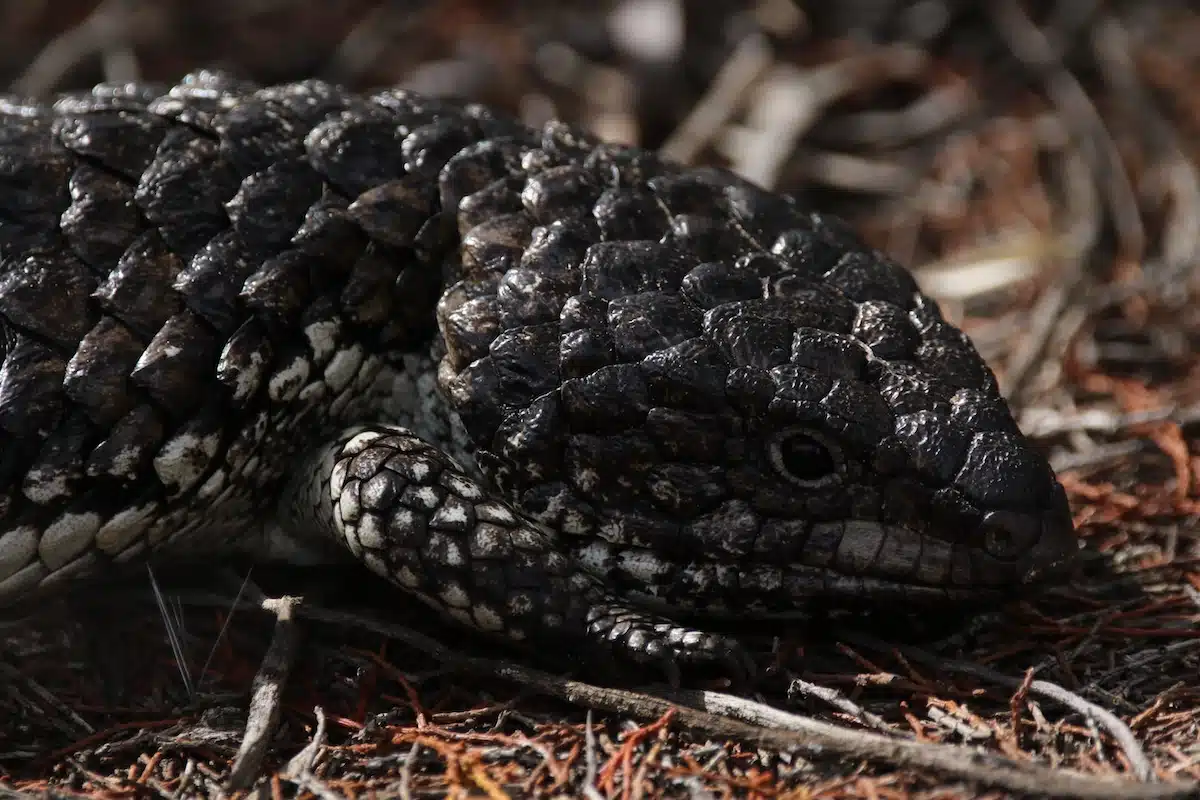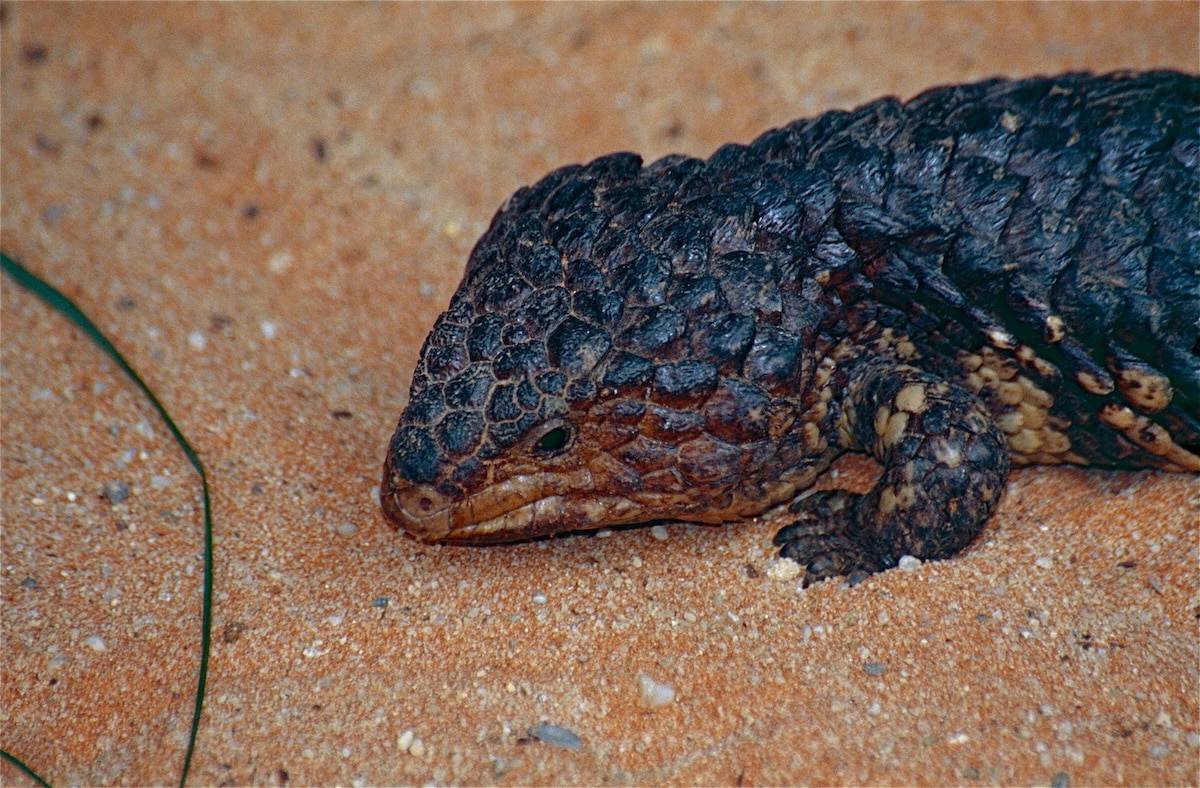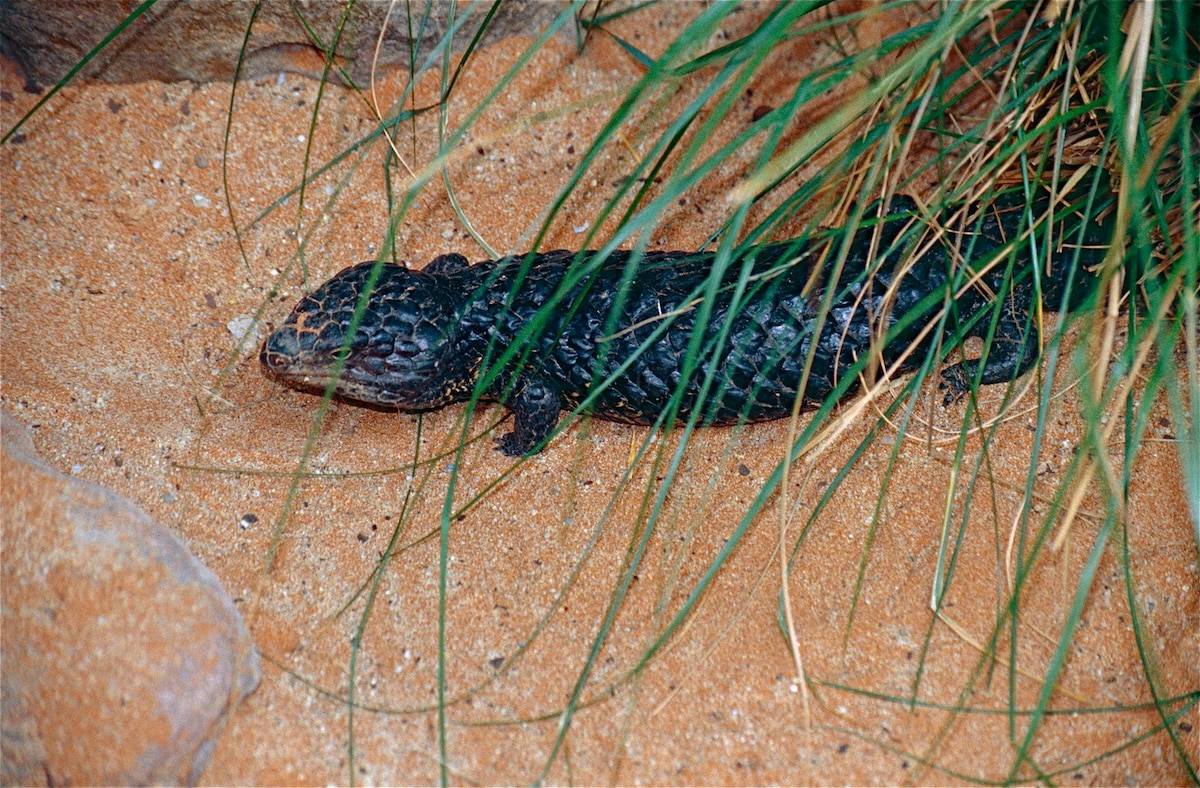In the vast landscapes of Australia, where unique wildlife thrives, the shingleback lizard emerges as a fascinating and often overlooked creature. With its distinctive appearance and unhurried demeanor, this slow-moving reptile has carved out a niche in the arid regions of the continent.

A Unique Appearance
Meet the shingleback lizard, a robust, flattened body and scales resembling overlapping shingles on a roof.
Its short legs and stumpy tail give it a distinctive appearance, earning it the nickname “stumpy-tail” lizard.
Don’t let its unassuming looks fool you; the shingleback has some impressive survival tricks up its scaly sleeve.
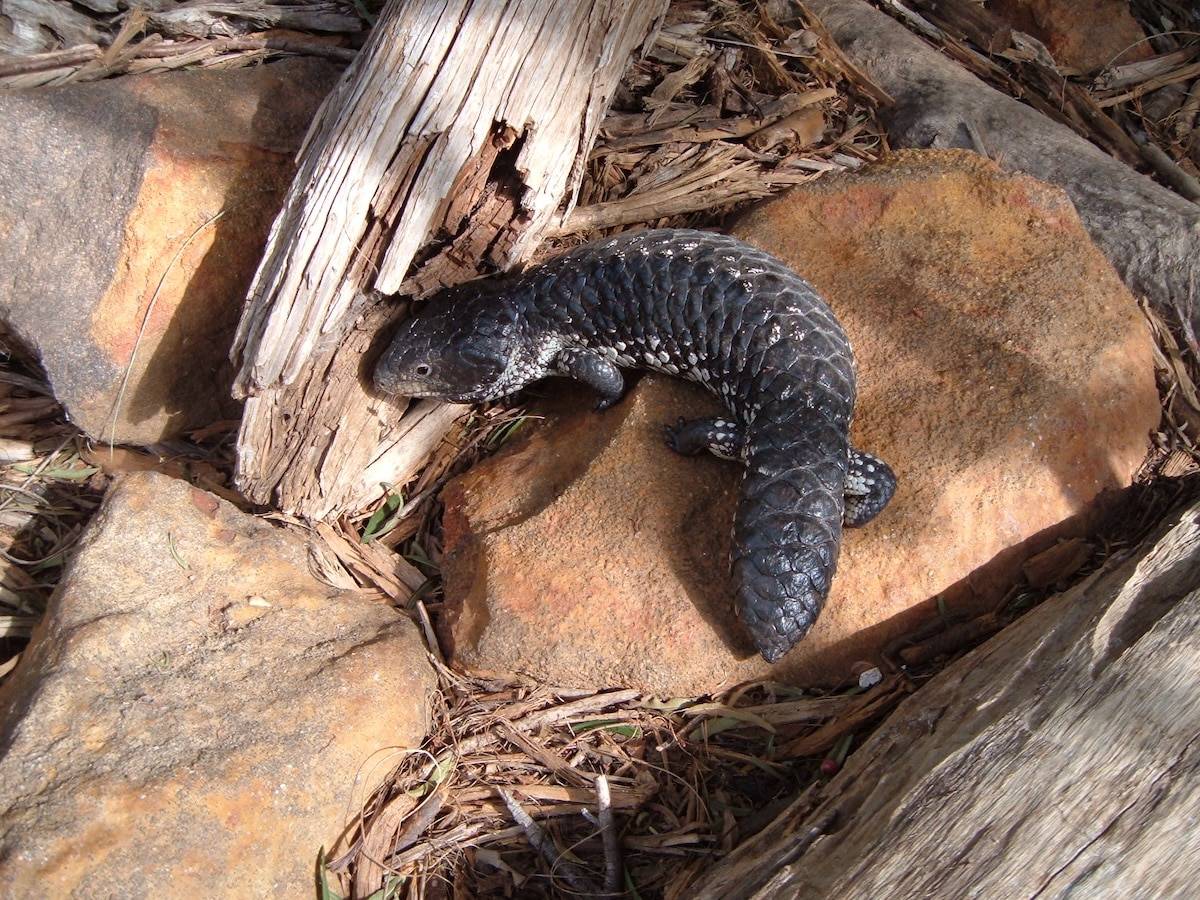
A Master of Camouflage
In the harsh Australian outback, blending in is the key to survival.
The shingleback lizard excels at camouflage, with its earthy tones seamlessly merging with the arid surroundings.
As it moves with deliberate slowness, it becomes nearly invisible to predators, relying on its cryptic coloring to escape notice and stay off the menu.
Lifelong Partnerships in the Wilderness
Unlike many solitary reptiles, shingleback lizards are known for forming monogamous bonds that last a lifetime.
These reptilian couples share territories, forage for food together, and even engage in elaborate courtship rituals.
It’s a heartwarming display of loyalty in the vast, challenging landscapes they call home.
A Diet of Diversity
Despite their slow pace, shingleback lizards are opportunistic feeders. Their diet includes a variety of vegetation, berries, and even the occasional insect or small animal.
Their ability to adapt their diet to the availability of resources showcases the resilience that has allowed them to thrive in some of the harshest environments on Earth.
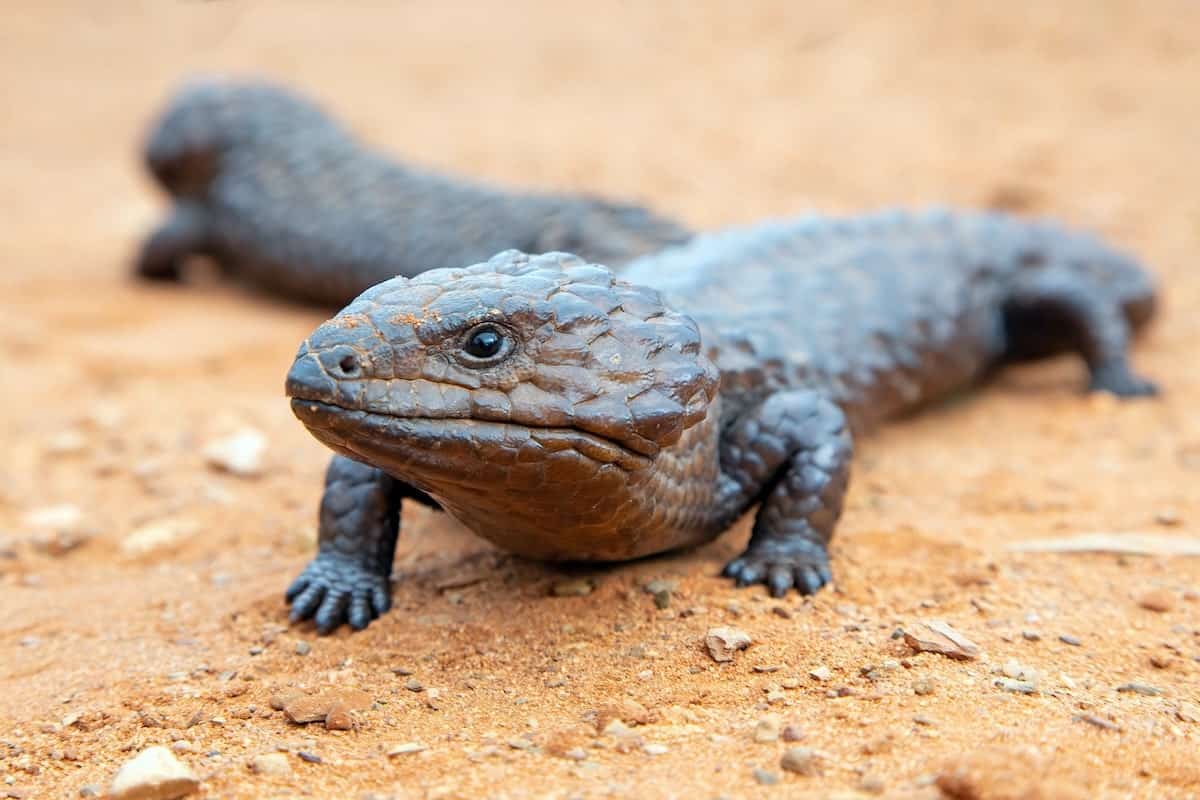
The Dance of Survival
The shingleback lizard’s slow and steady approach to life is not just a matter of temperament; it’s a survival strategy.
By conserving energy and moving deliberately, these reptiles minimize the risk of falling prey to faster predators.
Their methodical approach to life is a testament to the adage that slow and steady truly win the race in the unpredictable world of the wild.
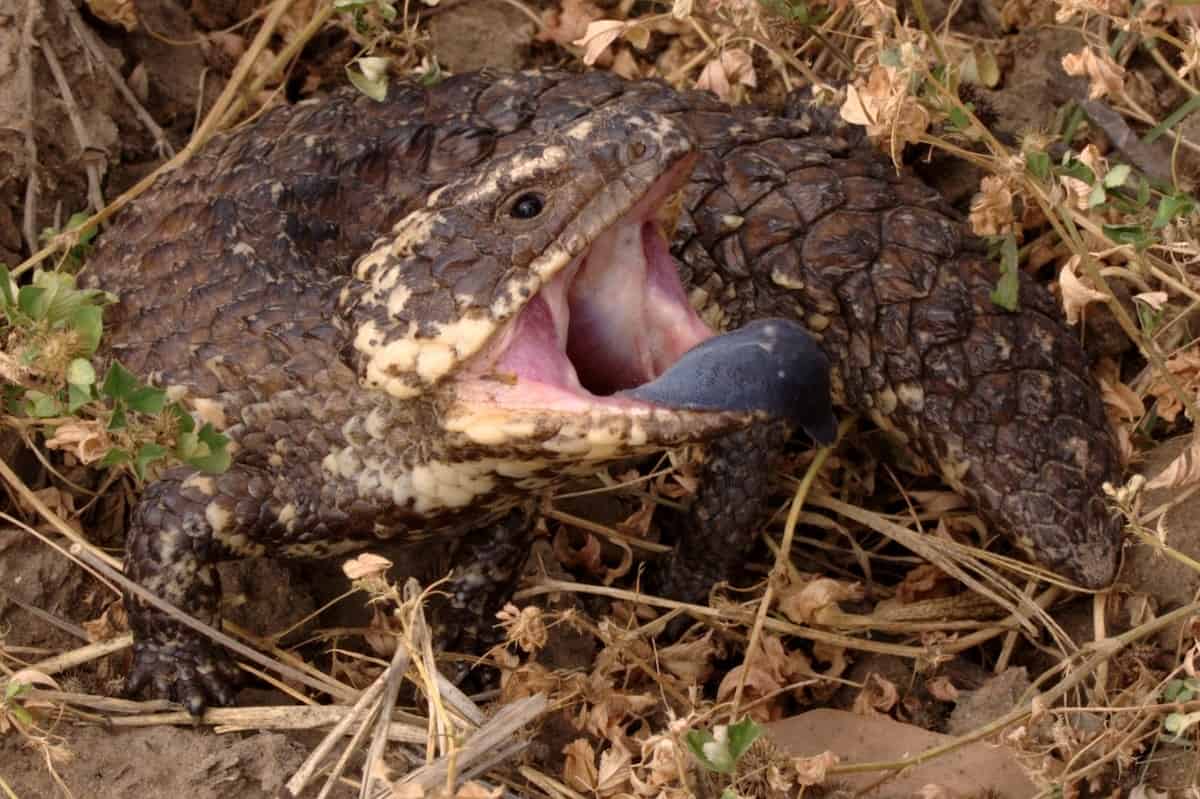
The Shingleback Lizard: Conclusion
In a world that often celebrates speed and agility, the shingleback lizard stands as a reminder that success comes in various forms.
Its unique appearance, adaptive behaviors, and lifelong partnerships paint a portrait of resilience in the face of adversity.
As we delve into the wonders of the natural world, let’s take a moment to appreciate the unsung heroes like the shingleback lizard, whose slow and steady journey through life is a testament to the beauty of nature’s diversity.
To read more stories like this, check out the article below:
- Python Vs. Monitor Lizard Fight to Death
- Watch: Massive Monitor Lizard Scales Shelf at Seven-Eleven
- Lizard Eggs
Join our Forum for free today!

- Brown Bear Approaches And Wiggles His Foot - July 22, 2024
- Mountain Biker Has An Extremely Close-up Encounter With a Wild Giraffe - July 22, 2024
- Eagle Flies Into a Moving Car - July 21, 2024

